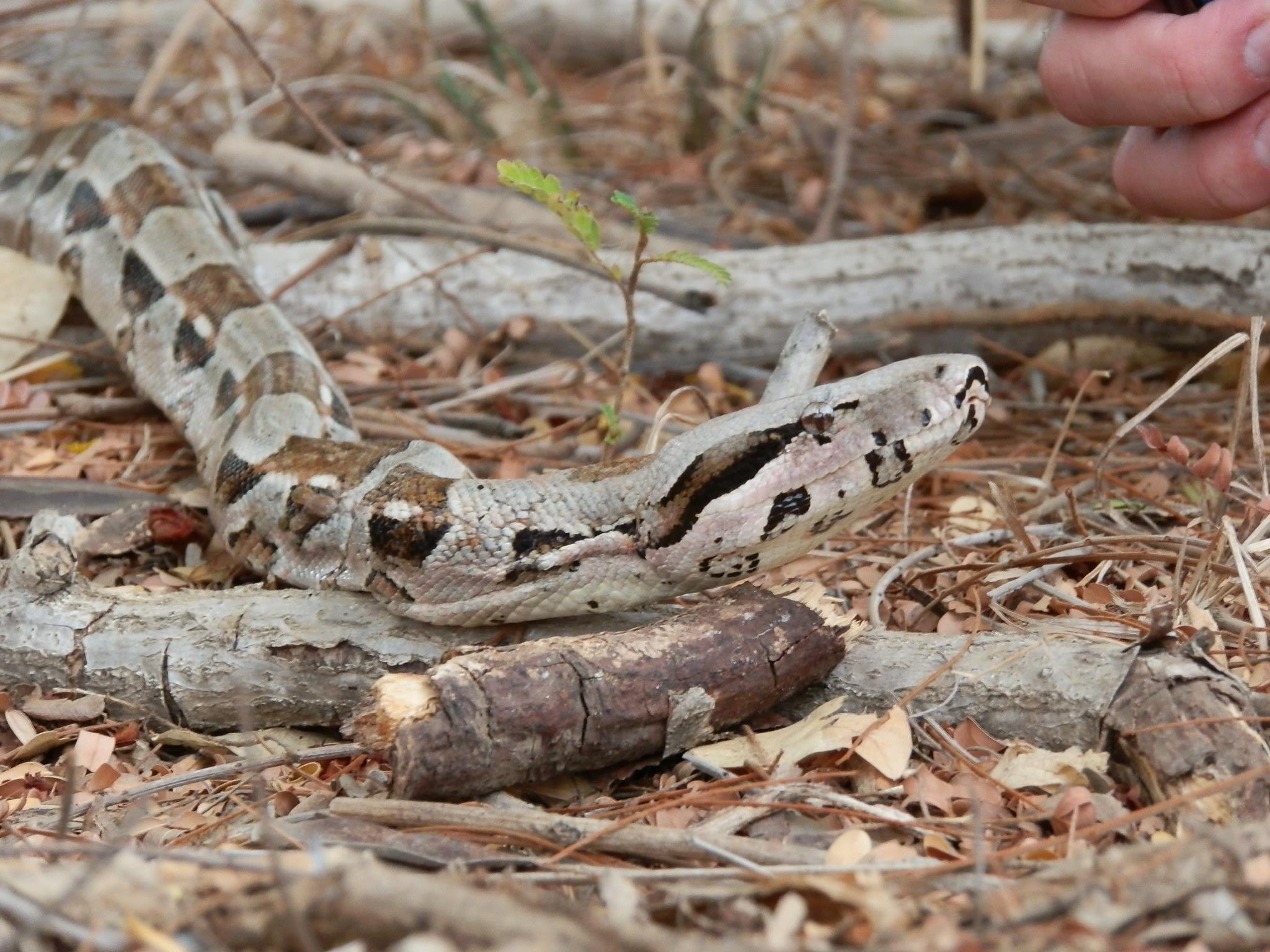tragavenado (Boa constrictor)
Scientific Name: Boa constrictor
Common Name: Tragavenado
Other Common Names: Boa, macaurel, sarura.
Taxonomic Commentary:
In Venezuela is only present the subspecies Boa constrictor occidental, while in Central America is the subspecies Boa. C. Inperator and in Panama and Tobago Island is Boa. C. Sabogae.
Morphological Description:
The specimens of this species measure between 0.5 and 4.5 m in length, although most do not exceed 2 m. Females are usually longer than males. The boas are triangular in shape and covered with numerous small scales on their back. The eyes are small, and the pupils are arranged vertically elliptically. It presents an attractive dorsolateral coloration that consists of 16 to 20 dark irregular spots in forms of the letter H connected to each other, of reddish tones or brick that remain inside a background that can be white, pink or golden, the ventral surface is of color Light cinnamon, gray or cream dotted black. Behind the eyes there is a black strip that reaches the corners of the lips and you can also see a dark line that extends from the head to the tail. Usually males have a pair of keratinized spurs better developed than females.
Habitat:
This snake inhabits diverse environments, including dry forests, grasslands, wet forests and mangroves. When inactive they can be found in hollows of trees, accumulations of litter and branches and between roots. Whereas when they are active they are usually found moving along the ground or branches of trees.
Habits:
It is of terrestrial habits and can be found active, mainly, in the nocturnal hours; Although it is possible to get copies out of their hiding places during the day. It is strictly carnivorous, the young feed on small rodents, frogs, birds, eggs, chicks and reptiles; While adults actively lurk or actively seek out medium-sized mammals, for example, predation of Titi monkeys has been reported. Occasionally they hunt birds.
Reroduction and Longevity:
It reproduces in the rainy season. Sexual maturity is reached between 2 and 4 years and can live 30 years. The gestation time is about 4 months and can give birth to between 10 and 64 offspring with a size of 30 to 50 cm in length. The female attracts the male by emitting a cloacal aroma during the breeding season.
Special features:
It is a non-venomous snake like the rest of the boas and among its most outstanding features is the killing of its prey by constriction (by which it bears its specific name). It is false that he can eat adult deer with skeletal and sleep his prey with a gas that gushes through his mouth.
Distribution:
It is a good native of America, that is distributed from Argentina to the north of Mexico. In Venezuela, it is present in all low and warm zones, from sea level up to 1,500 m above sea level (Biorregiones: the Andes, Lara-Falcón hills system, coast line, Llanos, Guayana, Delta of the Orinoco river and depression of the Lake of Maracaibo).
Present in:
Island bioregion
Maracaibo lake depression bioregion
Bioregion the Andes
Bioregion system of hills Lara-Falcon
Continental coastal bioregion
Coastal Bioregion of the Coast
Bioregion of the Orinoco River Delta
Bioregion the Plains
Guiana Bioregion
Legal aspects:
Boa. C. Occidentalis is listed in Regulation 338/97 of the European Community and in Appendix I of CITES. In Venezuela there are laws and general documents that regulate the use of the biological resources of the nation, where the guiding principles for the conservation of Biological Diversity (Law on Management of Biological Diversity, Official Gazette of the Republic, Number 39.070 Dated 01/12/2008) and The current actions that the Venezuelan society demands in terms of conservation through the current National Strategy for the Conservation of Biological Diversity.
